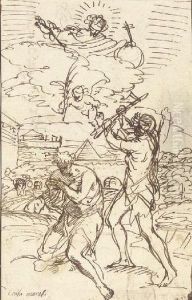Agostino Masucco Masucci Paintings
Agostino Masucci, also known as Agostino Masucco, was an Italian painter of the late Baroque period, born in 1691 in Rome, Italy. He was a significant figure in the Roman art scene of the 18th century, known for his religious and mythological paintings, as well as his portraiture. Masucci was a student of Carlo Maratta, one of the most influential artists of his time, who played a pivotal role in shaping Masucci's artistic style.
Masucci's works are characterized by their grace and clarity, embodying the transition from Baroque to the more restrained Rococo style. His paintings often feature soft color palettes and elegant figures drawn with a gentle touch, reflecting the influence of his mentor Maratta as well as the changing tastes of the period.
During his career, Masucci received numerous commissions from churches and noble patrons, which allowed him to create large altarpieces and decorative schemes for chapels and palaces. He was also involved in the restoration of older artworks, a common practice among artists of his time. His painting 'The Apotheosis of St. Louis' for the church of San Luigi dei Francesi in Rome is considered one of his masterpieces.
Masucci was a member of prestigious institutions such as the Accademia di San Luca in Rome, and he held the position of Principe, or president, of the academy in 1744. Despite his success, he did not establish a large workshop or school, and therefore his influence on subsequent generations of artists was limited compared to other leading painters of his era.
Agostino Masucci died in 1758 in Rome, leaving behind a legacy of refined and elegant paintings that encapsulate the artistic transitions of the 18th century in Italy. His works can be found in various churches and collections in Rome and other parts of Italy, and they continue to be studied and appreciated for their contribution to the Roman Baroque tradition.







